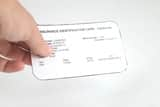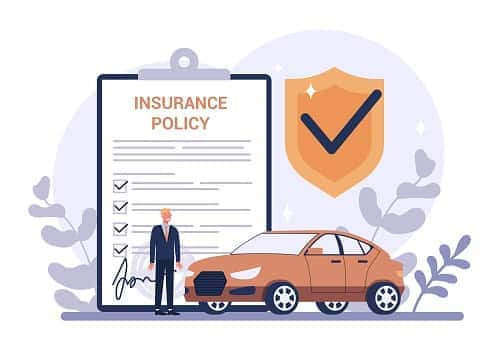How to buy car insurance for the first time
Shopping for first-time car insurance can be intimidating, but the more you know about insurance, the better equipped you will be to find a great auto insurance policy at the best price.
There are many things first-time car insurance buyers need to know. Your rates depend on many factors, including your age, where you live, your driving experience, and even your marital status.
You have to choose between getting full coverage – including comprehensive and collision coverage -- or just carrying liability coverage. Comprehensive and collision coverage is a good idea unless you have a vehicle that isn’t worth much and isn’t worth repairing if it’s damaged.
In almost every state, “everybody has to have liability coverage,” says Robert Passmore, vice president of auto and claims policy with the American Property Casualty Insurance Association. New Hampshire and Virginia are the only states that don’t require liability protection.
You also need coverage beyond liability insurance if you have a car loan.
“If you've got a loan on your vehicle, your lender is going to require you to have those kinds of coverages,” Passmore says.
Also, you have to find a company that suits your needs. Whether you're looking for minimal coverage, want collision and comprehensive protection or would like roadside assistance, there are companies with insurance policies tailored to meet your requirements. Once you've narrowed all these options based on what they offer and their prices, it’s easier to make an informed decision about which one provides the best value for you.
Here's what to consider when buying your first insurance policy whether it's a new car or an old vehicle:
Determine the type of coverage you need
Car insurance is required in almost every state, but the type of coverage you need may vary.
There are several common types of car insurance:
- Collision coverage. Covers damages to your car that result from a collision with another car or object or as a result of flipping over your vehicle.
- Comprehensive coverage. Covers damage to your car caused by things other than a collision, such as fire, falling objects, missiles, explosions, earthquakes, windstorms, hail, vandalism and riots, or contact with animals. This form of coverage also reimburses you if your car is stolen.
- Liability coverage. Liability coverage is divided into two parts: bodily injury and property damage. Bodily injury liability covers damages you or family members listed on your policy cause to someone else. Property damage liability covers damages you cause to someone else’s property.
- Uninsured and underinsured motorist coverage. Uninsured motorist insurance covers damages that occur to you or your vehicle when an uninsured or hit-and-run driver hits you. Underinsured motorist insurance covers you if someone hits you but does not have insurance coverage sufficient to cover your losses.
- Medical payments coverage and personal injury protection. This part of car insurance covers the treatment of injuries to you and your passengers after an accident. It also might cover lost wages and funeral costs.
Minimum car insurance requirements vary by state. For example, in Alaska, you must carry $50,000 per person/$100,000 per accident for bodily injury or death, and $25,000 for property damage for liability protection.
By contrast, in Pennsylvania, the limits are just $15,000/$30,000 for bodily injury or death, and $5,000 for property damage. Make sure you know what's required in your state.
The less coverage you purchase, the lower your premium -- but the less protection. It’s important to remember that carrying minimum amounts of insurance may not be adequate to protect your assets should you be involved in an accident.
Collect your personal and vehicle details before contacting the insurance company
The next step in getting car insurance for the first time is to gather your personal and vehicle information.
This information includes your driver's license, proof of address and a copy of your vehicle registration. Make copies of that information to have everything ready before calling an insurance agent or visiting their office.
Get car insurance quotes from different insurers
Get quotes from at least three different insurance companies to ensure that you're getting the best deal.Make sure to request coverage at the same level when you get insurance quotes.
Choose an insurance company
It's important to find an insurance company that offers both quality coverage and a reasonable price. You want to consider their coverage options, discounts available, as well as how reputable they are in the industry before choosing one over another.
Pay your premium
Once you decide what kind of plan is best for your needs, look over all the fine print to know exactly what's covered by this new agreement ahead of making any payments. When you're ready, you can set up your payment plan and pay your first premium. this can be in full or in installments.
What you need to get car insurance
The best way to get a great rate on your car insurance is to shop around and gather quotes. But before doing so, make sure you have your information handy. Insurers generally want to know information about your vehicle, including:
- The year, make and model and body style. Sometimes, your car's vehicle information number (VIN) is all that is needed to provide these details.
- The date you purchased the vehicle
- Miles driven
- Information about who owns the vehicle
- The address where the vehicle is garaged
- The name of your prior insurance carrier and the expiration date of your policy if you’re on another policy, such as a parent’s
The insurer also wants to know information about you, such as your full name, date of birth and driver's license number (with state of issue).
Details of your driving history -- including any history of tickets and accidents, or past periods when your license was suspended -- also are essential in securing accurate quotes.
How much is car insurance for first-time drivers?
Car insurance can be costly for first-time drivers, particularly if you’re young whether it's your first car or you're driving your parent's vehicle.
The average car insurance rate for a 16-year-old who has his or her own policy is nearly $7,000 a year for full coverage.
Rates come down a bit after that but are still expensive for several years. For example, at 19, a driver is still paying almost $3,560 annually, on average, for full coverage on their own policy -- more than $1,800 higher than the national average -- $1,758 -- for drivers age 30, according to our data.
How first-time drivers can save on car insurance
While such costs can seem intimidating to new drivers, there are ways to lower the premium. While they take a little effort, the work you put in can yield big savings.
Shop around for better car insurance rates
Shopping around and gathering multiple quotes is the best way to get the right car insurance policy at the best price. Using a search engine such as the one at this site is a quick, convenient way to find out your options.
Get discounts
Looking for discounts is one of the most important tips for getting car insurance. Most auto insurance companies offer an array of discounts that can offer significant policy savings. Some of the most popular include:
- Bundle policies. When you purchase more than one type of policy with an insurance company – for example, both an auto policy and a renters or homeowners policy – it’s typical for the insurer to reward you with lower premiums for all your policies. Bundling is one of the biggest discounts you can get -- often 15% or more off your policy.
- Good student discount. Young drivers who excel in school often can earn a price break on their policy. For example, those who finish in the top 20% of their class might be eligible for this discount.
- Multi-car discount. If you insure more than one car with a single insurer, you might qualify for a substantial discount – perhaps as much as 25%.
- Safe driver discount. Driving for a long period without an accident can earn you a price break.
- Defensive driving course. Enrolling and completing a defensive driving course can knock 5% or 10% off your costs. Completing this type may also help you remove department of motor vehicle points off your driving record, which can lower your costs even further.
- Increase your deductible. Raising your deductible to $500 or $1,000 can save you money on premiums. Typically, the higher you raise your deductible, the more you save. Just make sure you can afford to pay this deductible should you need to make a claim.
- Improve your credit score. A higher credit score results in lower car insurance premiums in most states. It's important to note that insurers use credit-based insurance scores -- not your typical credit score -- when setting rates. These scores are based on information in your credit profile. Also, a handful of states -- including California, Hawaii, Massachusetts and Michigan – limit or don’t allow this practice.
- Usage-based insurance. Your driving habits determine the cost of pay-as-you-drive insurance. As part of this program, your insurer monitors your driving habits electronically, and you get lower rates for good driving behavior, such as not speeding or braking too hard.
Frequently asked question about insurance for new drivers
What insurance company has the cheapest rates?
It’s impossible to name one company with the best insurance for first-time buyers. No one insurance company has the cheapest rates for everyone. Based on a 2022 rate analysis by Insurance.com, Geico has the lowest rates on average for young drivers as $3,653 a month.
What other factors should I consider when shopping for car insurance?
When shopping around for an auto insurance company, it’s crucial that you make sure you are “comparing apples to apples” as you accumulate rate quotes, Passmore says.
That means that with each company you approach, you should make sure you are getting a quote for “the same number of vehicles, the same coverages, the same kind of limits that you currently carry.”
Comparing quotes in this way will help you to know which insurer is offering you the best deal.
Why do first-time drivers pay more for car insurance than experienced drivers?
One of the most important factors for setting car insurance rates is the driving experience. There are many other contributing factors, including location and demographic profile. However, insurance companies see experienced drivers as a lower risk for getting involved in an accident and filing an insurance claim. New drivers are at a higher risk of an accident, therefore they pay higher rates.






